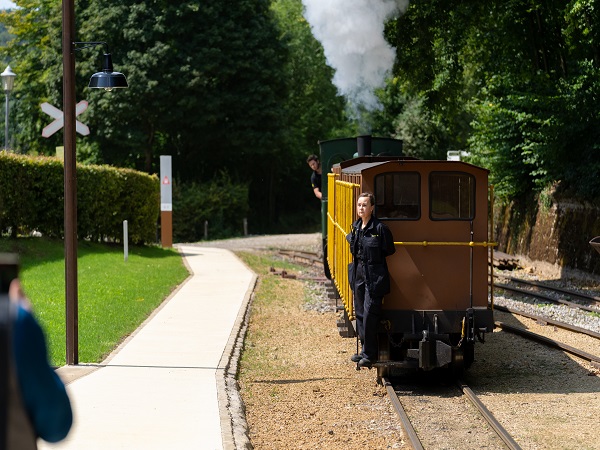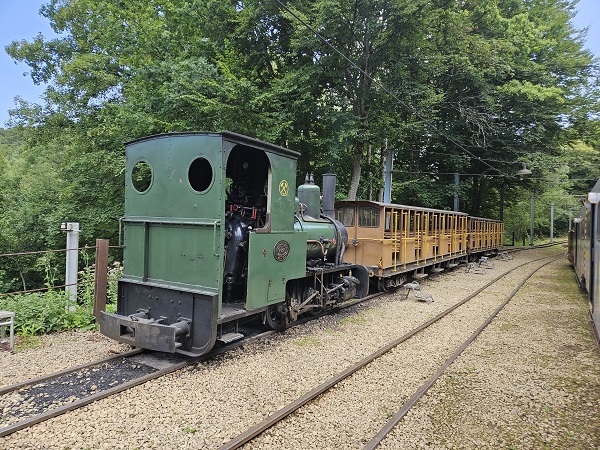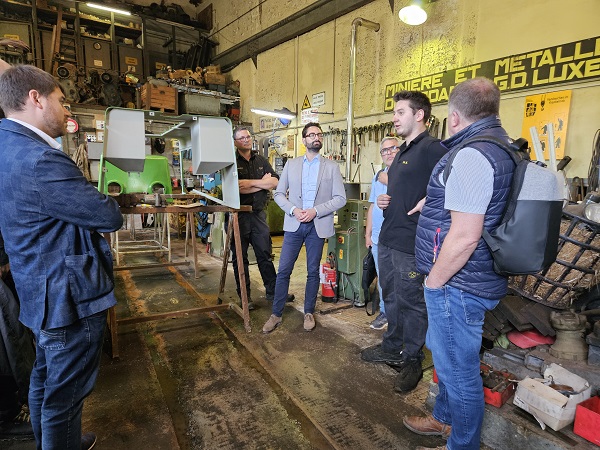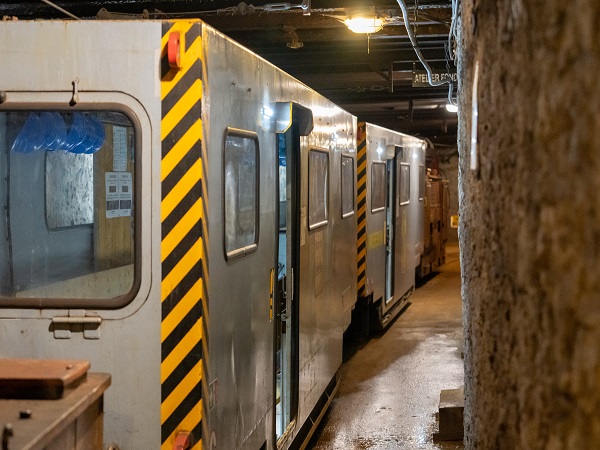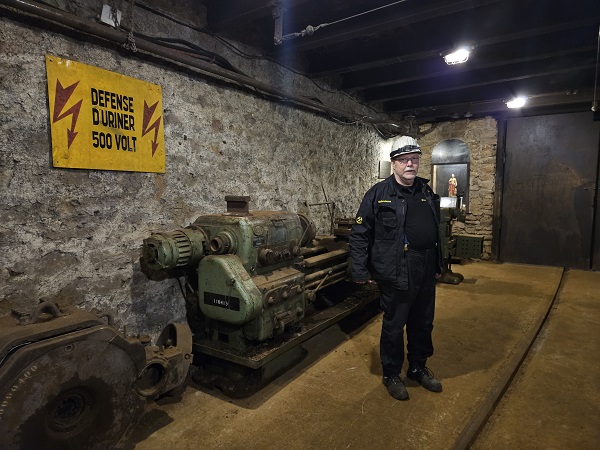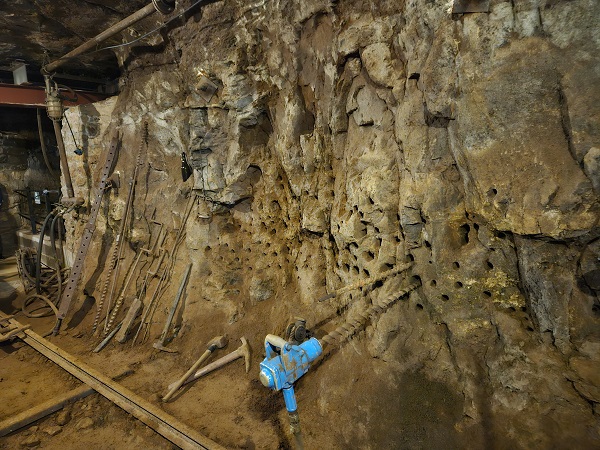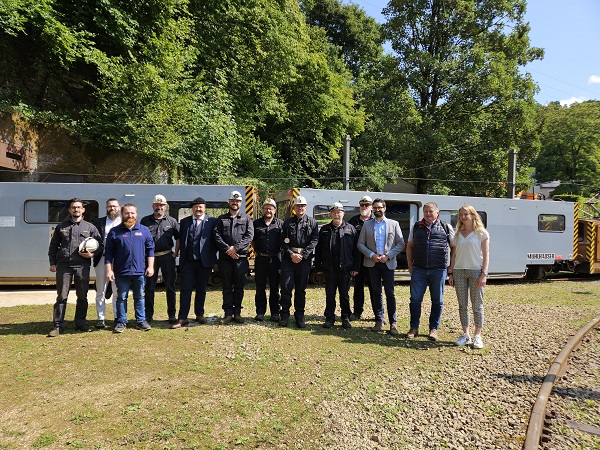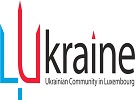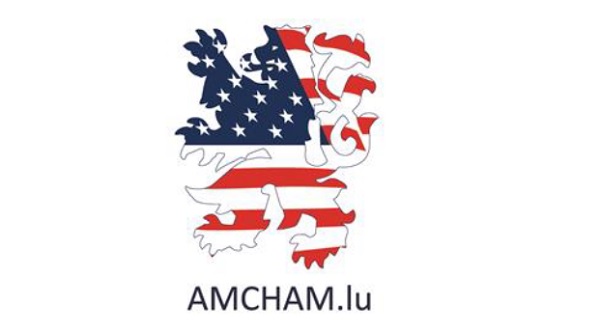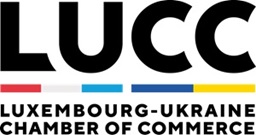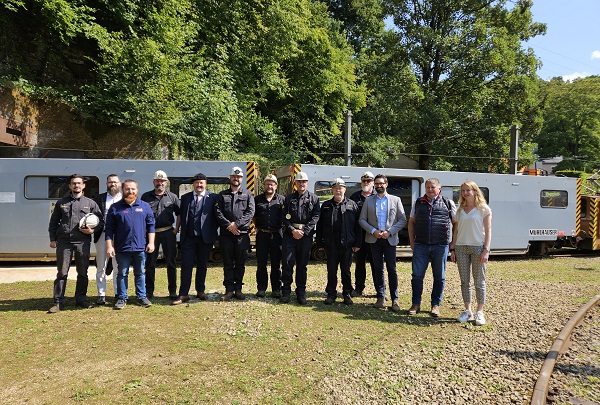 Credit: Jazmin Campbell, Chronicle.lu
Credit: Jazmin Campbell, Chronicle.lu
On Tuesday 5 August 2025, Luxembourg's Minister for Culture and Minister Delegate for Tourism, Eric Thill, invited members of the press to participate in a tourist excursion exploring the southern Minett region and its industrial heritage.
Following the first stop at Parc Merveilleux in Bettembourg and a visit to the Fond-de-Gras industrial site, the group boarded the "Minièresbunn" mining train after lunch for a guided tour of the Doihl mine in Rodange.
The Minièresbunn is a mining train running on a 700 mm narrow-gauge track between Fond-de-Gras and Lasauvage, with a stop at the former Doihl iron mine. This differs from the earlier Train 1900 ride, which operates on a standard 1,435 mm gauge and circulates between Pétange and Fond-de-Gras through the countryside. Like Train 1900, the mining train is operated by volunteers and runs every Sunday and public holiday (except Europe Day and National Day) from May to September. Guided tours are also available on request.
Founded in 1990, the Minièresbunn Doihl e.V. association currently has around 25 volunteers and maintains a collection of steam, diesel and electric locomotives that were originally used to load train cars with iron ore extracted from the mine, which operated between 1930 and 1978. The first stop on the train ride is the Doihl pithead, which the group visited on Tuesday afternoon.
The first leg of the journey from Fond-de-Gras to Rodange was powered by a "Krauss" steam traction engine built in 1897. A second electric engine (DC 500 V) then took visitors underground through the mine. While the full route extends to Saulnes in France, the group took a shorter version of the tour.
Guided by association volunteers, participants learned about former mining operations, working conditions and extraction methods. One highlight of the tour was the symbolic locomotive change - an important aspect of historical mining transport - before entering an authentic underground gallery. The mine maintains a cool, consistent temperature year-round (10-11 °C in the pithead).
The volunteers explained that after the mine closed, only empty buildings remained. Much of the current equipment was salvaged / acquired locally, while other elements were specially constructed to recreate the original experience. Today, there are more than 50 machines awaiting restoration. A specialised company carries out annual inspections, with volunteers responsible for the necessary maintenance and revisions; there is a lot of "learning by doing".
The site is not a traditional museum but instead focuses on offering an immersive mining train experience. Financing remains a challenge. While ticket and souvenir sales help cover small expenses, the association largely relies on public funding, such as support from local municipalities and the National Institute for Architectural Heritage (INPA). Only one person, hired by the municipality, is employed full time; all other staff are volunteers. Operating around 30 days per year, the Minièresbunn welcomes approximately 9,000 to 10,000 visitors annually.
During Tuesday's shortened visit, participants had the opportunity to see a small selection of the roughly 50 machines housed on-site.
One of the highlights of the year is the Saint Barbara festival on 4 December, celebrating the patron saint of miners.
Minister Thill concluded that the 2025 summer tourist excursion highlighted the richness of Luxembourg's industrial and railway heritage: "Their promotion, made possible by the commitment of numerous volunteers, strengthens the tourist appeal and cultural diversity of our country, particularly in the south.”
Following the mine visit, the group headed to a "Kabaischen" (cabin or lodge), in this case a repurposed miners' house, in Lasauvage, where the minister delivered Luxembourg's interim tourism assessment for 2025. For more on this, see https://chronicle.lu/category/at-home/56200-luxembourg-sees-record-3-6m-overnight-stays-in-2024-positive-tourism-trend-continues-in-2025

